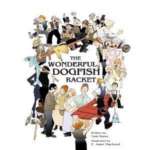
It was a normal summer for one small fishing village in Newfoundland until the dogfish arrived!

It was a normal summer for one small fishing village in Newfoundland until the dogfish arrived!
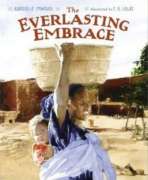
Each morning as the sun brightens the West African sky, mother and child prepare to start their day. They spend it bound together, the child riding on the mother’s back watching their world go past. Pounding millet, drawing water from the well, visiting friends, shopping at the outdoor market. They share the days in perfect step with one another. And even when the child grows big enough to go off and explore their world, the everlasting embrace endures.
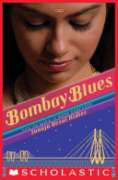
Dimple Lala thought that growing up would give her all the answers, but instead she has more questions than ever. Her boyfriend is distant, her classmates are predictable, and a blue mood has settled around the edges of everything she does. It’s time for a change, and a change is just what Dimple is going to get — of scenery, of cultures, of mind. She thinks she’s heading to Bombay for a family wedding — but really she is plunging into the unexpected, the unmapped, and the uncontrollable. The land of her parents and ancestors has a lot to reveal to her — for every choice we make can crescendo into a journey, every ending can turn into a beginning, and each person we meet can show us something new about ourselves.
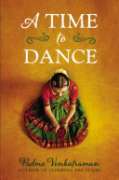
Padma Venkatraman’s inspiring story of a young girl’s struggle to regain her passion and find a new peace is told lyrically through verse that captures the beauty and mystery of India and the ancient bharatanatyam dance form. This is a stunning novel about spiritual awakening, the power of art, and above all, the courage and resilience of the human spirit. Veda, a classical dance prodigy in India, lives and breathes dance—so when an accident leaves her a below-knee amputee, her dreams are shattered. For a girl who’s grown used to receiving applause for her dance prowess and flexibility, adjusting to a prosthetic leg is painful and humbling. But Veda refuses to let her disability rob her of her dreams, and she starts all over again, taking beginner classes with the youngest dancers. Then Veda meets Govinda, a young man who approaches dance as a spiritual pursuit. As their relationship deepens, Veda reconnects with the world around her, and begins to discover who she is and what dance truly means to her.
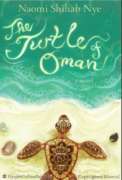
When Aref, a third-grader who lives in Muscat, Oman, refuses to pack his suitcase and prepare to move to Michigan, his mother asks for help from his grandfather, his Siddi, who takes Aref around the country, storing up memories he can carry with him to a new home.
Join the discussion of The Turtle of Oman as well as other books centered around relocation on our My Take/Your Take page.
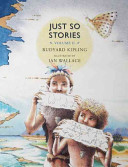
The second volume includes “The Beginning of the Armadilloes,” “How the First Letter Was Written,” “How the Alphabet Was Made,” The Crab That Played with the Sea,” “The Cat That Walked by Himself” and “The Butterfly That Stamped.” The first edition of Just So Stories was published in Great Britain in 1902, along with black-and-white illustrations by Kipling himself. The stories have remained in print ever since, delighting young readers in many countries. This new edition, published more than 110 years after the original, has been edited to remove a few references now understood to be offensive.
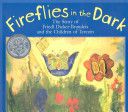
Covers the years during which Friedl Dicker, a Jewish woman from Czechoslovakia, taught art to children at the Terezin Concentration Camp. Includes art created by teacher and students, excerpts from diaries, and interviews with camp survivors.

Sarah Robinson is deeply troubled in the wake of her dad’s second marriage. She now has to deal with a new stepmom and two stepbrothers, Marco, who is her age, and Nacho, who’s younger. Even though they’ve all moved from Texas to California to start life as a new, blended family, none of the kids seem remotely happy about it. Sarah’s dad and stepmom then decide to take the whole family on a special vacation in order to break the ice and have everyone get to know one another. They’ll fly to Tahiti, charter a boat, and go sailing for a few days. It will be an adventure, right? Wrong. Dead wrong.
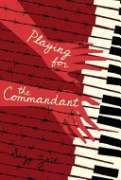
“Look after each other and get home safe. And when you do, tell everyone what you saw and what they did to us.” These are Hanna’s father’s parting words to her and her sister when their family is separated at the gates of the Auschwitz-Birkenau concentration camp. Her father’s words–and a black C-sharp piano key hidden away in the folds of her dress–are all that she has left to remind her of life before. Before, Hanna was going to be a famous concert pianist. She was going to wear her yellow dress to a dance. And she was going to dance with a boy. But then the Nazis came. Now it is up to Hanna to do all she can to keep her mother and sister alive, even if that means playing piano for the commandant and his guests. Staying alive isn’t supposed to include falling in love with the commandant’s son. But Karl Jager is beautiful, and his aloofness belies a secret. And war makes you do dangerous things.
See the review at WOW Review, Volume VII, Issue 3
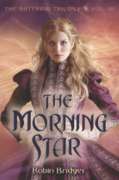
Katerina Alexandrovna, Duchess of Oldenburg, wants to be known as a doctor, not a necromancer. But Tsar Alexander III forbids women to attend medical school; his interest in Katerina extends only to her ability to raise the dead. Twice now, Katerina has helped him by using her power to thwart the forces of darkness—vampires bent on resurrecting the lich tsar Konstantin Pavlovich so that he can take what he sees as his rightful place on the throne. Katerina thought she had bound Konstantin to the Greylands, the realm of the dead, but he has found a way out. Now he is searching for the Morning Star, a sword that will allow him to command a legion of supernatural warriors.